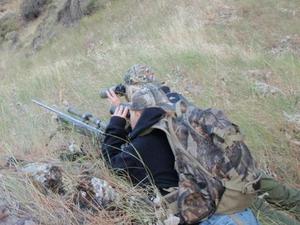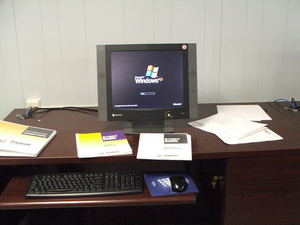I bought a Harris bi-pod. Actually, I bought it some time ago. I am so happy with it that I just have to write about it. I am not a sniper. I would like to do long-range shooting some day, but presently do not. I am a hunter. I don’t consider myself the best of shots, but I have evolved through the years from the youthful `throwing of lead’ at game (sometimes running), to one preferring a one-to-one ratio of triggers pulled to creatures felled. I am not a trophy hunter. I simply want to put one bullet where I want it – and come out of the field with nearly zero damaged meat. I don’t spend a lot of money on my stuff – but when I do purchase equipment – I want the best. Alas the Harris.
Ultra-Light
Most of my hunting is by foot, either a short foray in a day, or overnight by backpack – so I like to travel light. No advantage of all-terrain-vehicle or pack horse – just me. I have the bipod mounted on the Ruger M77 compact rifle. So I want a small bipod, and for a short barrel. I shoot mostly prone – thus the L Model Harris. Perfect.
Features
The bipod has extendable legs (2, obviously), that are either extended, for use, or parallel with the barrel, for when not in use. The bipod is typically mounted using the forward sling screw on the rifle, and mounts between the stock and the typical sling swivel. The legs pull and snap into the fully-extended position, which may be released by the tab-springs, or the legs may be positioned to partial extension positions anywhere in between, and locked with screws. So, the bipod lengths may be adjusted to any lengths (within the extension range), and the lengths may differ one leg to the other – say, if you are on a side-slope. (Wonderful.)
Practice
While the features of the bipod are not difficult to figure out – I recommend that you figure them out in practice, before you are trying to get that nice buck in the cross-hairs. Get accustomed to just how much you need to push on the snap release springs, and which way to turn the screws to tighten (or loosen) the legs in desired positions in between. (The screws will be facing away from you – so `screwing’ is `backward’.) By practicing beforehand you will also see what parts needed cleaned, or lubricated.
Maintenance
The bipod has moving parts! – that means from time to time they will need to be lubricated. I use a fine oil. Where I live we seem to have two seasons – one dry, and one wet. During the dry season things accumulate dust, and get squeaky; during the wet season they get wet, and / or muddy. So keep the bipod clean, dry, and lubricated as needed. Any SQUEAK (or `BOING’) is real LOUD when you are sneaking up on a deer!
Use
At game – I generally get into position with the legs fully extended, and bring them in if needed. Any needed elevation in butt stock I accommodate using my range finder or binos. Thus, for shooting I have solid support at both ends of the rifle. Wonderful. I can put the bullet where I want to. I am not sure what else to say here, about shooting, since I am not pretending to the world authority on the subject … but, …
I also want to say that, in addition to providing tremendous aid in shooting, the bipod is also fabulous for non-shooting aspects, as well. On a break, or fence crossing, or getting in/out of a vehicle, or if I want both hands for glassing (and rifle ready), instead of setting my rifle in the `DURT’ – I simply extend the bipod legs and set the gun upright – keeping it clean and dry – not against the ground. And unless the whole gun gets wet from rain or snow – the only thing I need to clean are the (bottoms of the) feet of the bipod.
So, that is my little speech about the Harris bipod. I love it.




